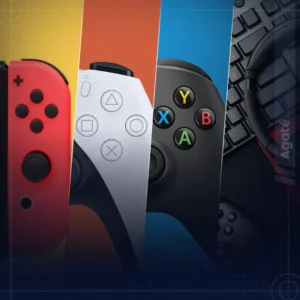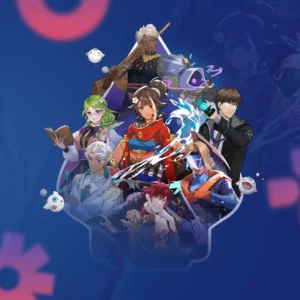If you‘re a fan of video games, you‘ve probably heard of indie games. From the unique art style and unexpected storylines, they often bring to the edginess of the game’s concept that makes an indie game, well, indie. But what exactly are they, and how are they different from mainstream games? In this article, we‘ll explore the definition, history, and future trends of indie games and why they matter for the gaming industry and culture.
Definition
Indie games, short for independent video games, are created by individuals or small teams of developers without the financial and technical support of a large game publisher, a similar meaning to independent music or film. Unlike most AAA (triple-A) games, which are often driven by market demands and profit margins, indie games have more creative freedom and flexibility to experiment with new ideas, genres, and gameplay mechanics.
Indie games can be made for any platform, from PC to consoles to mobile devices. They can be 2D or 3D, pixel art or realistic graphics, narrative-driven or gameplay-focused.
History
Indie games have always been around on computers, but they were mostly hidden as shareware in the early 90s. It took until the mid 2000s for people to discover the treasure trove of indie games and start appreciating them.
As indie games got more popular, more developers decided to go indie. Some quit their jobs at big studios to pursue their dreams or ideas, and others just started out as indie in the competitive game industry. Whatever their backgrounds, more and more developers created indie games, and they became more and more loved by gamers. If we look back further into the past, indie game development actually has its roots in the early days of personal computing and hobbyist programming. In the 1970s and 1980s, many enthusiasts started making their own games using simple tools like BASIC and assembly language. Some of these games were distributed through mail orders or magazines, while others were shared through floppy disks or online bulletin board systems. These so-called bedroom coders were primarily based in the United Kingdom and other parts of Europe.
However, by the 1990s, the rise of video game publishers and home consoles made it harder for independent developers to compete in the market. The costs of development and distribution increased while the audience for niche and experimental games decreased. Many hobbyist programmers lost interest or moved on to other careers.
Indie games have been around since the earliest days of video game development, but they really began to gain traction in the late 2000s and early 2010s, thanks in large part to the rise of the advent of digital distribution platforms like Steam and Xbox Live Arcade, which allowed indie developers to reach a global audience without relying on physical retailers or publishers digital distribution, which made it easier than ever for indie developers to release their games to a worldwide audience.
As mentioned before, the modern indie game scene emerged in the early 2000s thanks to a combination of factors that made indie game development more accessible and visible. These factors include:
- The emergence of crowdfunding platforms like Kickstarter and Patreon enabled indie developers to raise funds directly from their fans and supporters.
- The availability of low-cost and open-source development tools like GameMaker Studio, Unity, Unreal Engine, and Godot Engine, enabled indie developers to create games across multiple platforms with minimal coding skills.
- The rise of digital game marketplaces that boost indie games to publish themselves, such as Humble Bundle, gog.com, itch.io, and Steam.
- The recognition of indie games by major game awards events like The Game Awards, BAFTA Games Awards, Independent Games Festival, and IndieCade Festival.
These factors led to a surge in indie game production and consumption in the late 2000s and 2010s. Many indie games became critical and commercial successes, garnering praise from critics and players alike. Some indie games even influenced or inspired mainstream games in terms of gameplay innovation or artistic expression.
Indie games have also made their way to big consoles like Xbox 360, PlayStation 3, and Wii. Some of these games are based on popular flash games or original indie games that got noticed. Indie games are usually made by programmers who don’t have much money for art. Yet in 2008, Microsoft launched Xbox Live Indie Games, which let indie developers make and sell games for the Xbox 360 using XNA tools.
Smartphones like the iPhone also opened new opportunities for indie developers. Many indie developers make games only for smartphones like iOS and Android. There are also websites that focus only on indie games, like IndieCity. They don’t mix indie games with mainstream games like other platforms do. Before the launch of the PlayStation 4 and Xbox One, Sony and Microsoft announced their support for indie developers and their games on their new consoles. They offered incentives such as free development kits, self-publishing options, and financial assistance to attract indie developers. This made it easier for indie games to reach a wider audience and compete with mainstream games on the new generation of consoles.
Conclusion
In conclusion, indie games are video games created by small teams or individuals without the financial support of large publishers. Indie games have been around since the early days of video game development, but they became more popular in the mid-2000s, thanks to the emergence of digital distribution platforms like Steam and Xbox Live Arcade. The modern indie game scene emerged in the early 2000s thanks to the availability of low-cost and open-source development tools, crowdfunding platforms, boutique indie game publishers, and recognition from major game awards events. Indie games offer more creative freedom and flexibility to experiment with new ideas, genres, and gameplay mechanics, and they have made a significant impact on the gaming industry and culture. With the rise of mobile devices and the support of major console manufacturers, indie games continue to play an important role in shaping the future of video games.







